HOME
"Jylland"
- a Danish Navy Frigate from
1860 -
----------
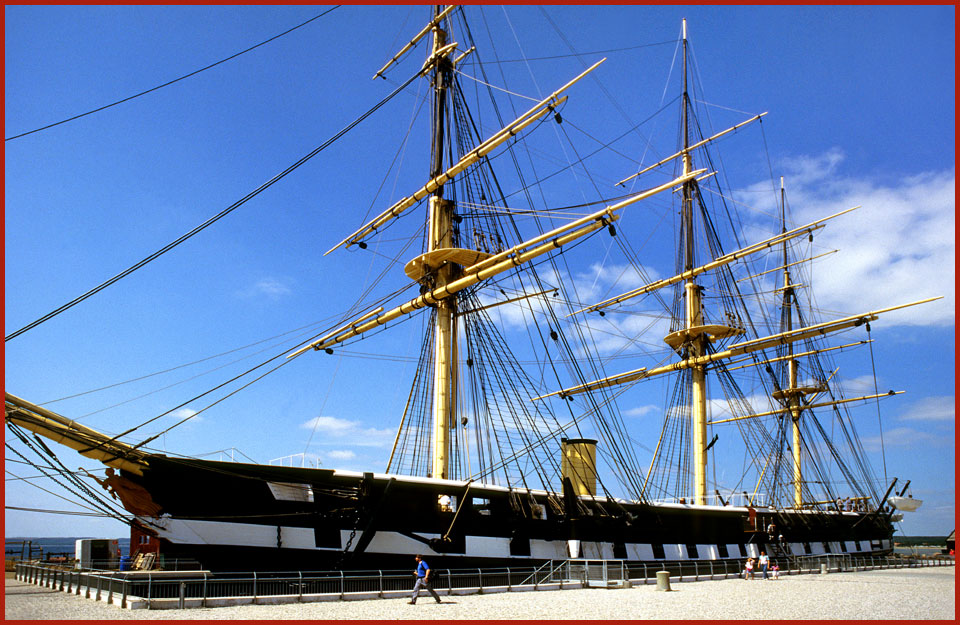
Fregatten "Jylland" -
Frigate "Jylland"
- in all her glory -
(Photography by Karsten Petersen)
Details:
Builders: The Naval Yard at
Holmen, Copenhagen, Denmark.
Launched: Nov. 20. 1860
Displacement: 2.456 tons.
Hull Length: 71 meters.
Total length: 96 meters.
Breadth: 13,19 meters.
Draught: 5,42 meters.
(Fwd.) - 5,97 meters. (Aft)
Main Mast, height: 53 meters
Total sail Area: 2.097 sq.
meters.
Indicated Horsepower: 1300
Hp.
Speed, sail: 12 knots.
Speed, engine: 11 knots
Armament: 44 pcs. 30-pounder
guns.
The frigate "Jylland" is a unique
ship,- being the longest wooden ship in the world today.
Also it is the Royal Danish
Navy's last big warship built from wood, and having a traditional sailing
ship rigging as well as a steam engine, it is a perfect representative
for the transition from sail to steam power.
It took part in the battle of
Helgoland in 1864, which was the first naval battle in history where two
fleets engaged each other without the use of sails, but only used their
steam engines during the entire battle.
The ship is now beautifully
restored and on permanent display at the picturesque small town of Ebeltoft
situated on the peninsula of Jylland, which also gave name to the ship
when she was launched from the Naval Yard in Copenhagen in 1860.
Today the ship is a major tourist
attraction and well worth a visit.
It holds a special attraction
to me, since my grandfather served on the "Jylland" during his term in
the Royal Danish Navy.
It is indeed a strange feeling
to walk around on a 140 years old warship, knowing that one's grandfather
once walked the same wooden decks.
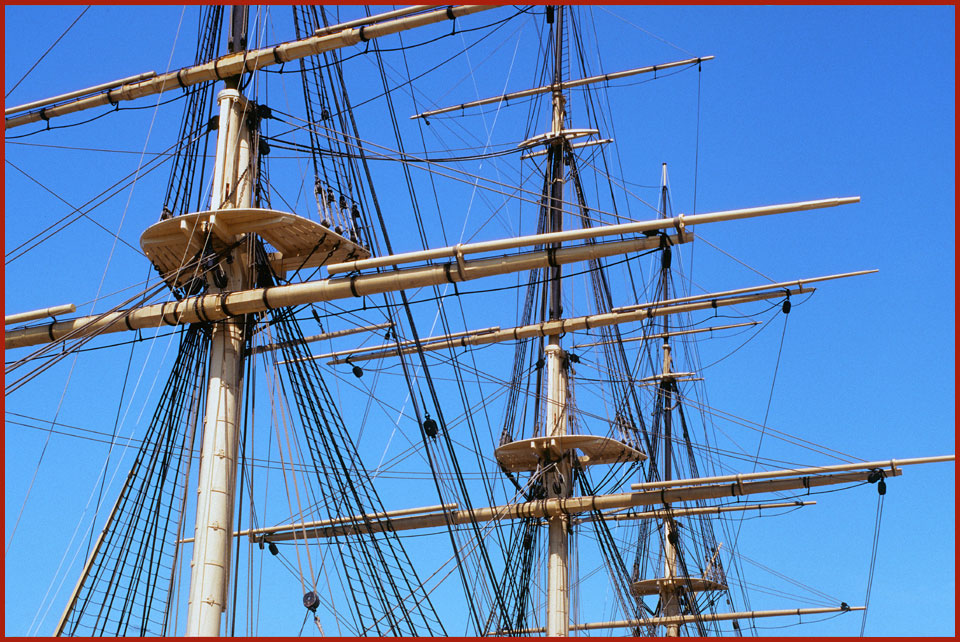
Frigate "Jylland"
Three full rigged masts, -
navy frigate "Jylland"
(Photography by Karsten Petersen)
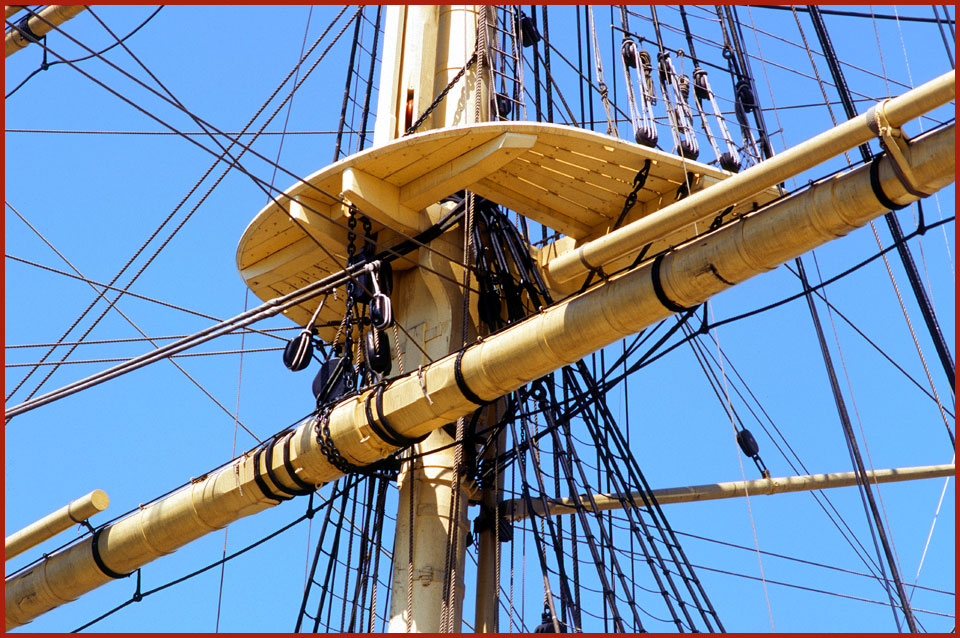
Frigate "Jylland"
Main mast, - details
(Photography by Karsten Petersen)
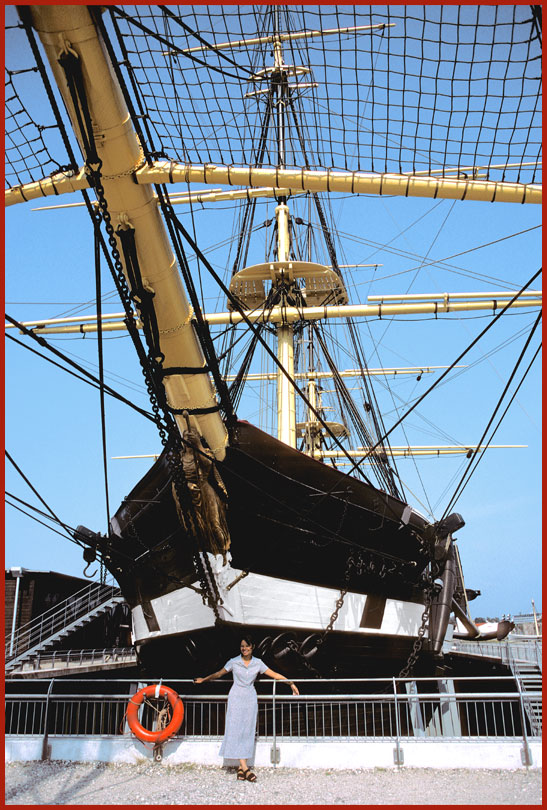
Frigate "Jylland"
- and Kit Yu -
(Photography by Karsten Petersen)
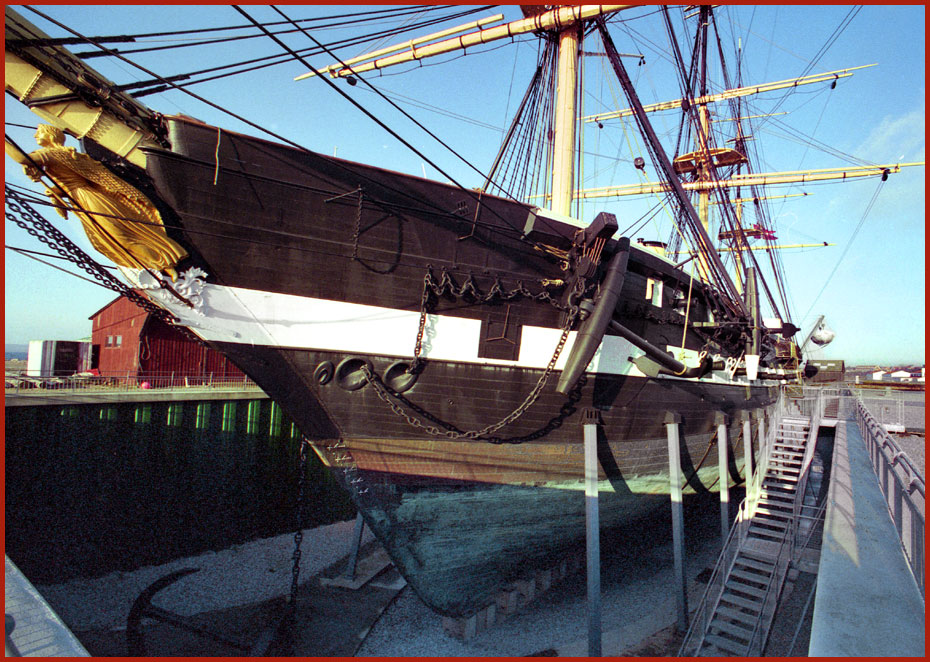
Frigate "Jylland"
Navy frigate "Jylland" , preserved
in it's drydock in Ebeltoft, Denmark.
(Photography by Karsten Petersen)
The frigate "Jylland" is a unique
ship,- being the longest wooden ship in the world today.
Also it is the Royal Danish
Navy's last big warship built from wood, and having a traditional sailing
ship rigging as well as a steam engine, it is a perfect representative
for the transition from sail to steam power.
It took part in the battle of
Helgoland in 1864, which was the first naval battle in history where two
fleets engaged each other without the use of sails, but only used their
steam engines during the entire battle.
The ship is now beautifully
restored and on permanent display at the picturesque small town of Ebeltoft
situated on the peninsula of Jylland, which also gave name to the ship
when she was launched from the Naval Yard in Copenhagen in 1860.
Today the ship is a major tourist
attraction and well worth a visit.
It holds a special attraction
to me, since my grandfather served on the "Jylland" during his term in
the Royal Danish Navy.
It is indeed a strange feeling
to walk around on a 140 years old warship, knowing that one's grandfather
once walked the same wooden decks.
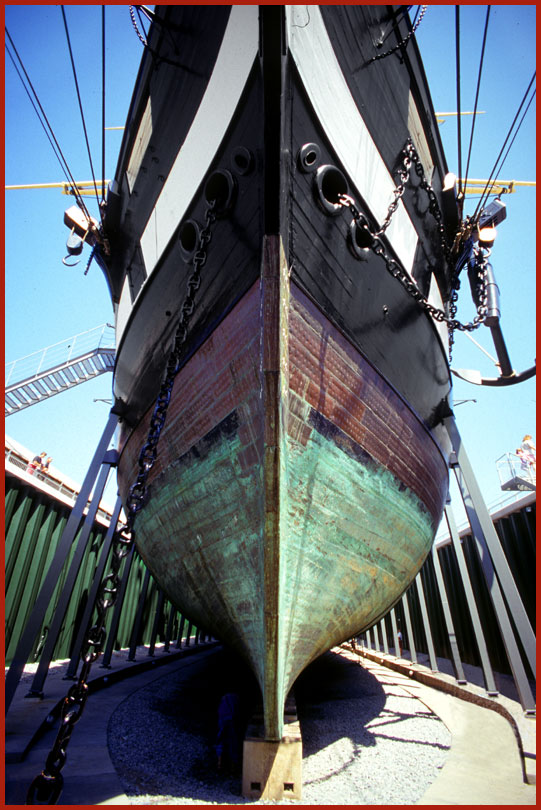
Frigate "Jylland"
(Photography by Karsten Petersen)
The ship had a reputation for
being a very fast and seaworthy ship, which is quite easy to imagine today,
when looking at the beautiful, sleek hull lines.
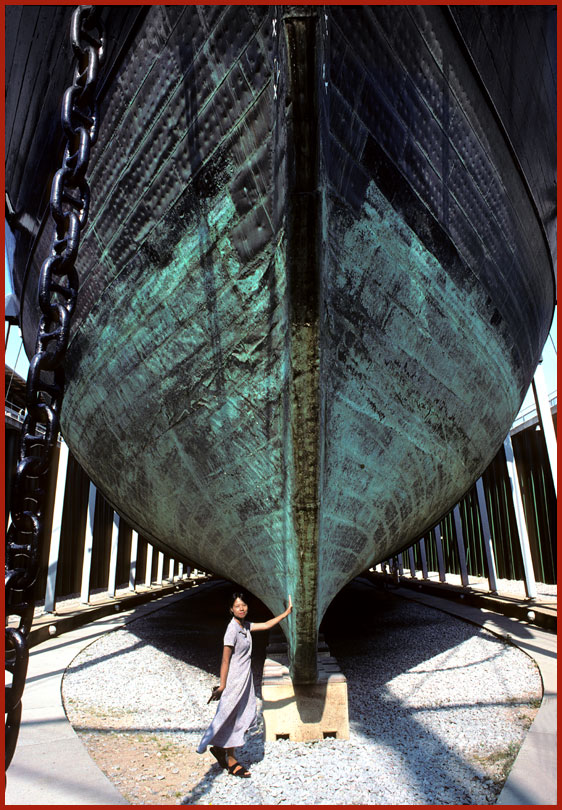
Frigate "Jylland"
A closer look at the underwater
hull, - and for size comparison, - Kit Yu.
(Photography by Karsten Petersen)
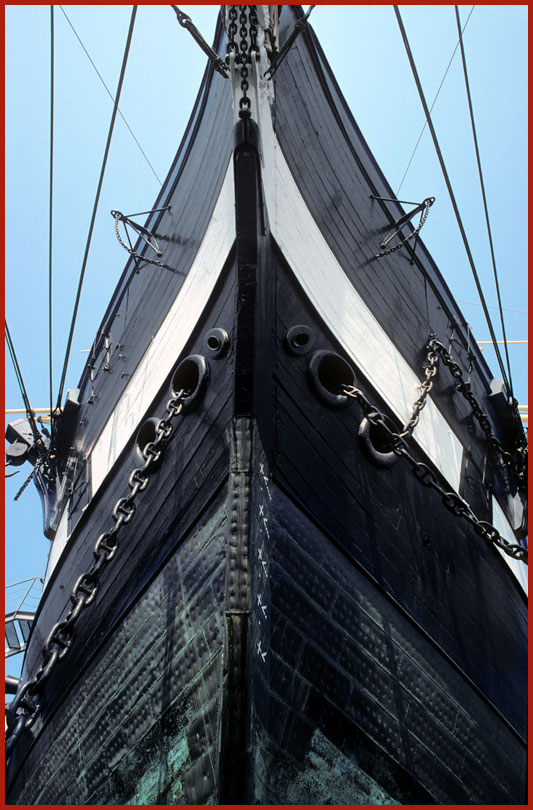
Frigate "Jylland"
- and here looking up at the
bow -
(Photography by Karsten Petersen)

Frigate "Jylland"
- and here the stern section
-
(Photography by Karsten Petersen)
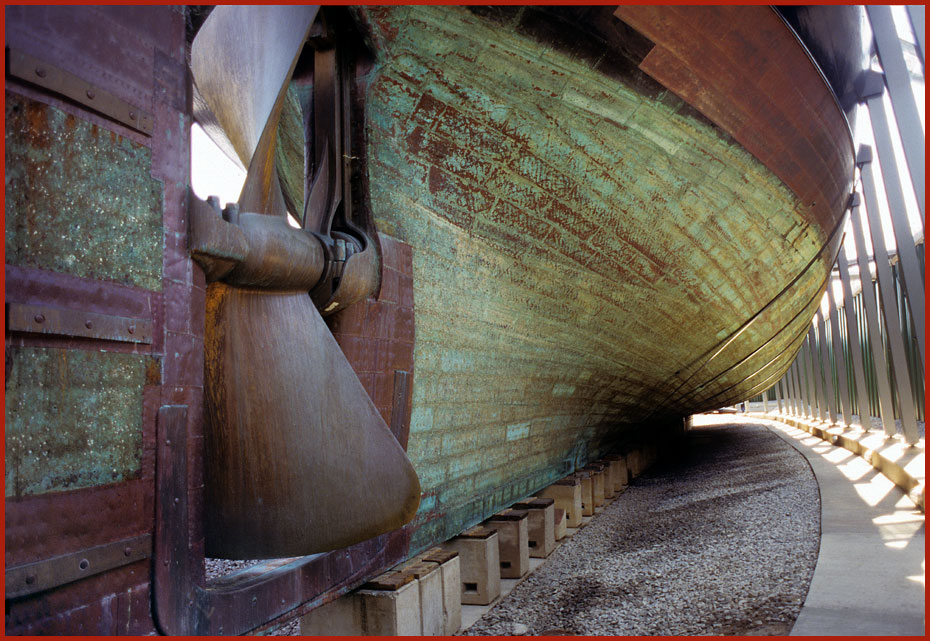
Frigate "Jylland"
Ship's bottom and rudder/propeller
arrangement
Propeller diameter: 4,8 meters.
(Photography by Karsten Petersen)
Here a closer look at the massive
rudder and the unique propeller arrangement, where the propeller could
be hoisted up into a "well" through the hull. This was done in order to
prevent too much water resistance from the huge propeller blades, when
only sails were used on the long ocean passages.

Frigate "Jylland"
(Photography by Karsten Petersen)
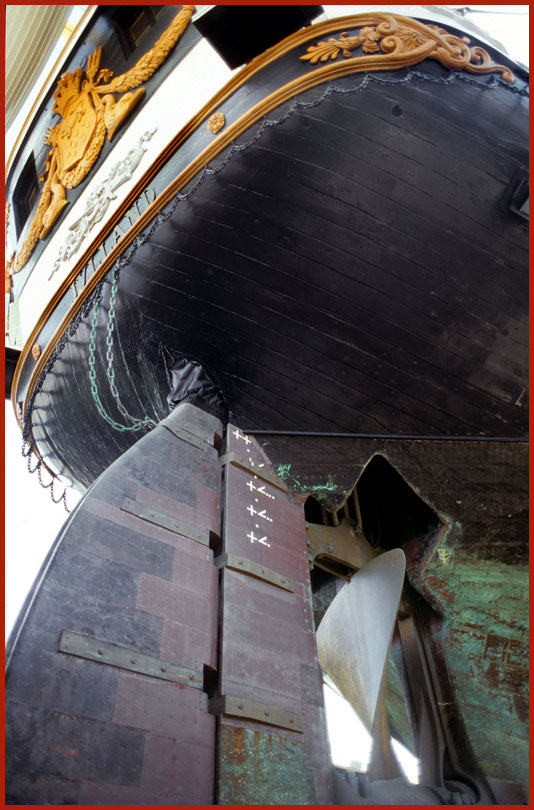
Frigate "Jylland"
- the well for retracting the
propeller into the hull -
(Photography by Karsten Petersen)
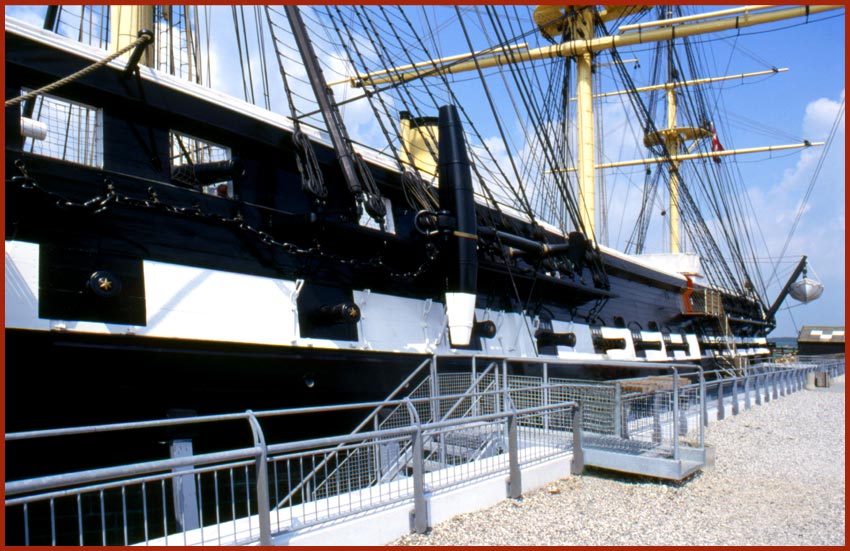
Frigate "Jylland"
Denmarks "Wall of Oak", - a
good look along the hull of the world's longest wooden ship.
(Photography by Karsten Petersen)

Frigate "Jylland"
- the "Wall of Oak", - two
rows of gun ports -, open and closed -
(Photography by Karsten Petersen)
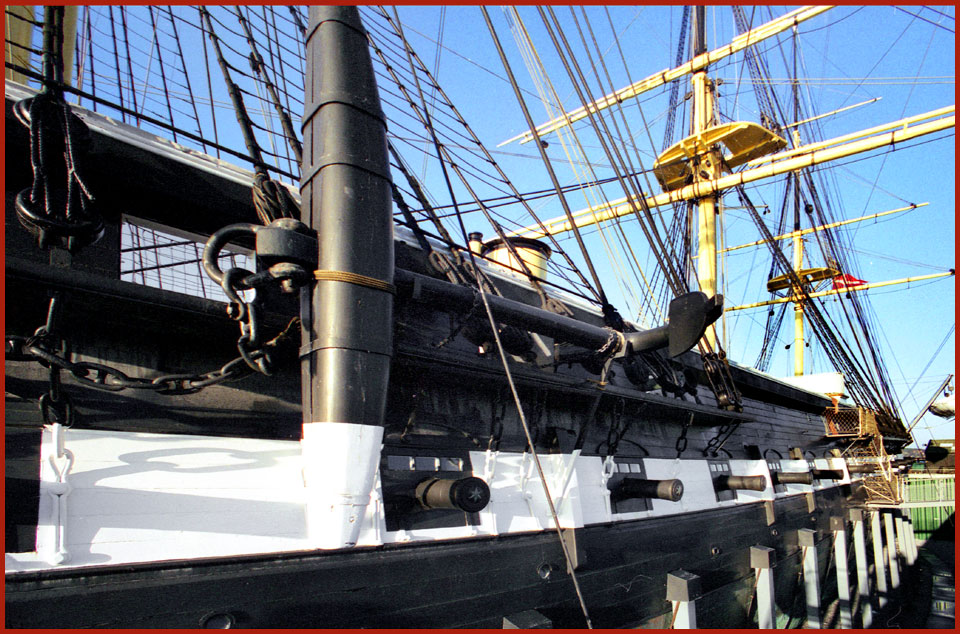
Frigate "Jylland"
A closer view at gun ports
and one of the huge anchors.
- 30 pounder guns ready for
action -
(Photography by Karsten Petersen)
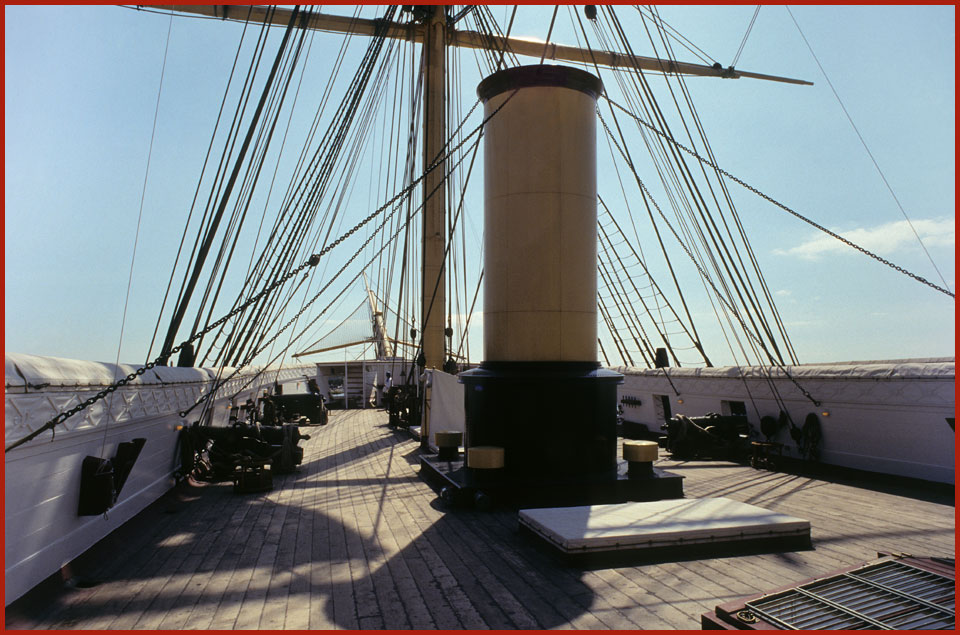
Frigate "Jylland"
- a view along the open gun
deck. Take note of the massive funnel, which under sail can be lowered
-
(Photography by Karsten Petersen)

Frigate "Jylland"
- the "Wall of Oak" seen from
inside the ship -
(Photography by Karsten Petersen)

Frigate "Jylland"
- a view over the bowsprit
forward -
(Photography by Karsten Petersen)
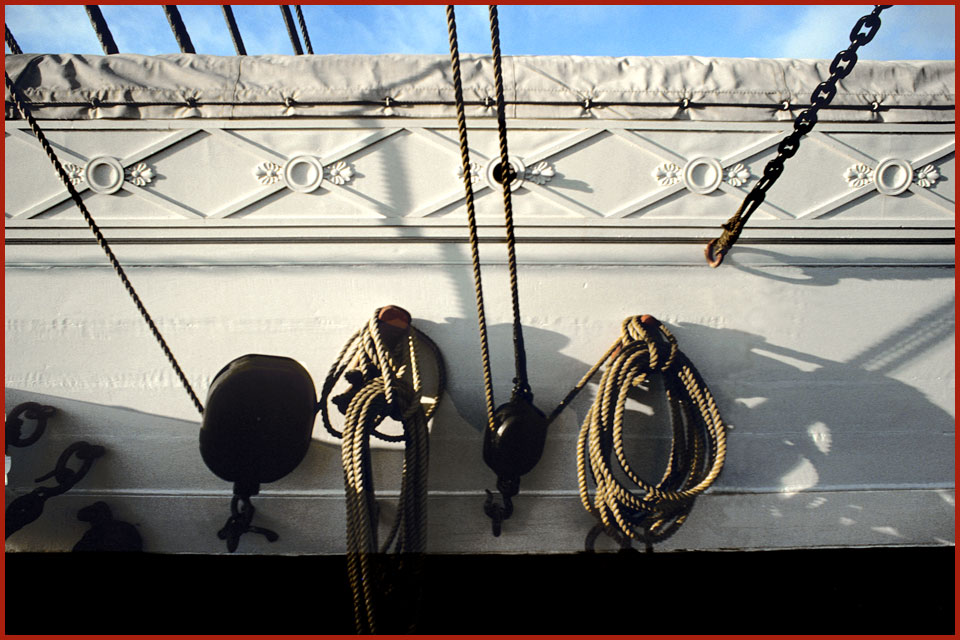
Frigate "Jylland"
- detail -
(Photography by Karsten Petersen)
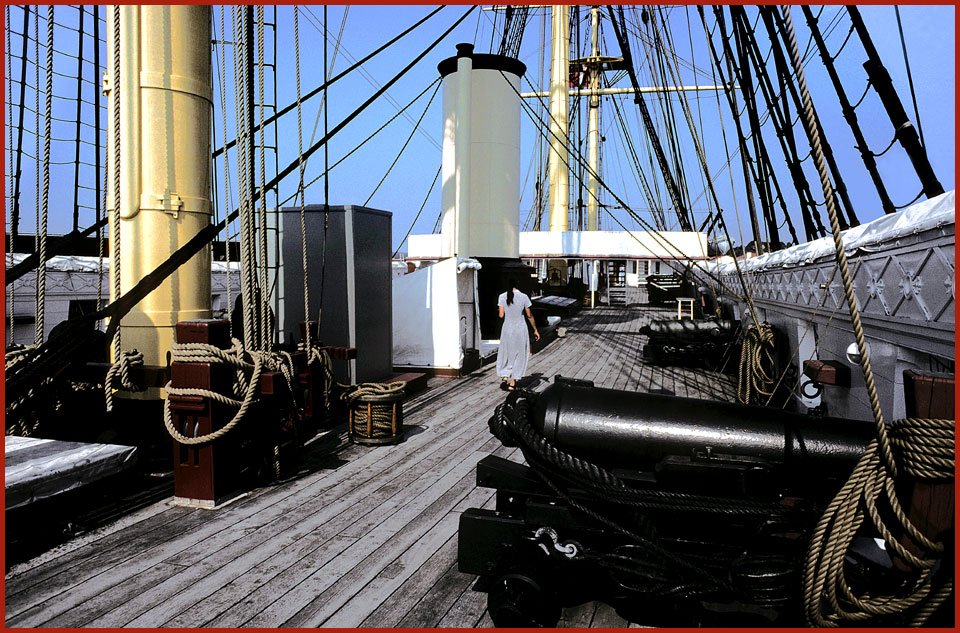
Frigate "Jylland"
The upper gun deck -
(Photography by Karsten Petersen)

Frigate "Jylland"
Upper gun deck, - port side
-, and Kit Yu -
(Photography by Karsten Petersen)
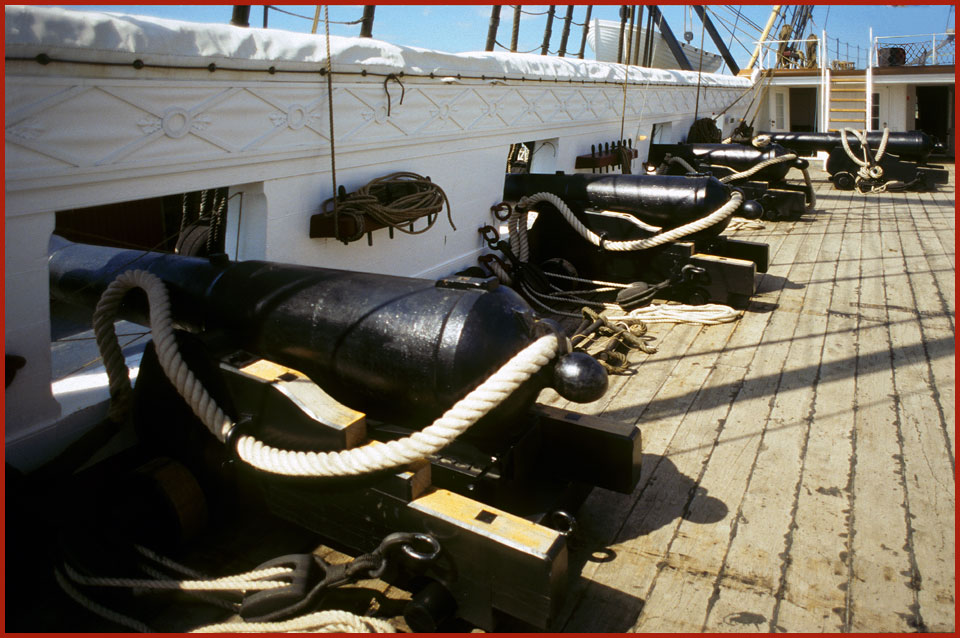
Frigate "Jylland"
- the open gun deck, - starboard
side -
(Photography by Karsten Petersen)
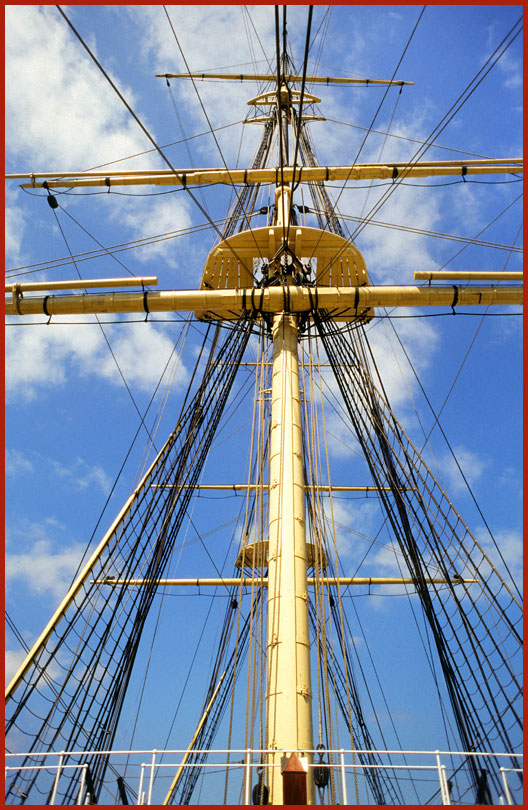
Frigate "Jylland"
- the main mast, - total height:
53 meters.

Frigate "Jylland"
-
and a final look at the rigging.
(Photography by Karsten Petersen)
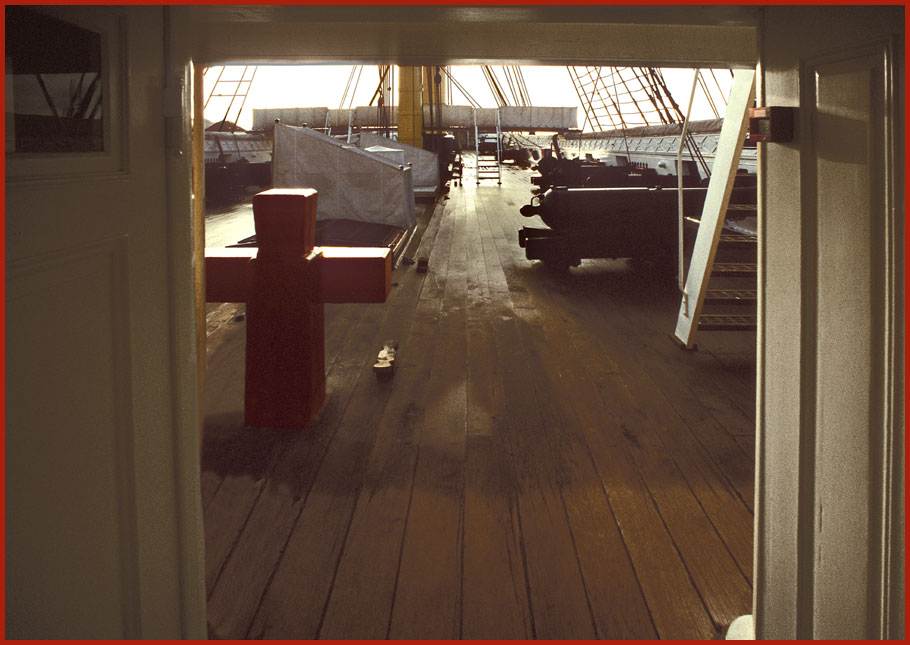
Frigate "Jylland"
Looking out on deck from the
Officer's accomodation aft -
(Photography by Karsten Petersen)
For more pictures of "Jylland",
- click HERE
Page initiated: Nov. 15th.
2004
Page updated: Aug. 23.
2006, - Jan.19.2008, - Jan.21.2008
























